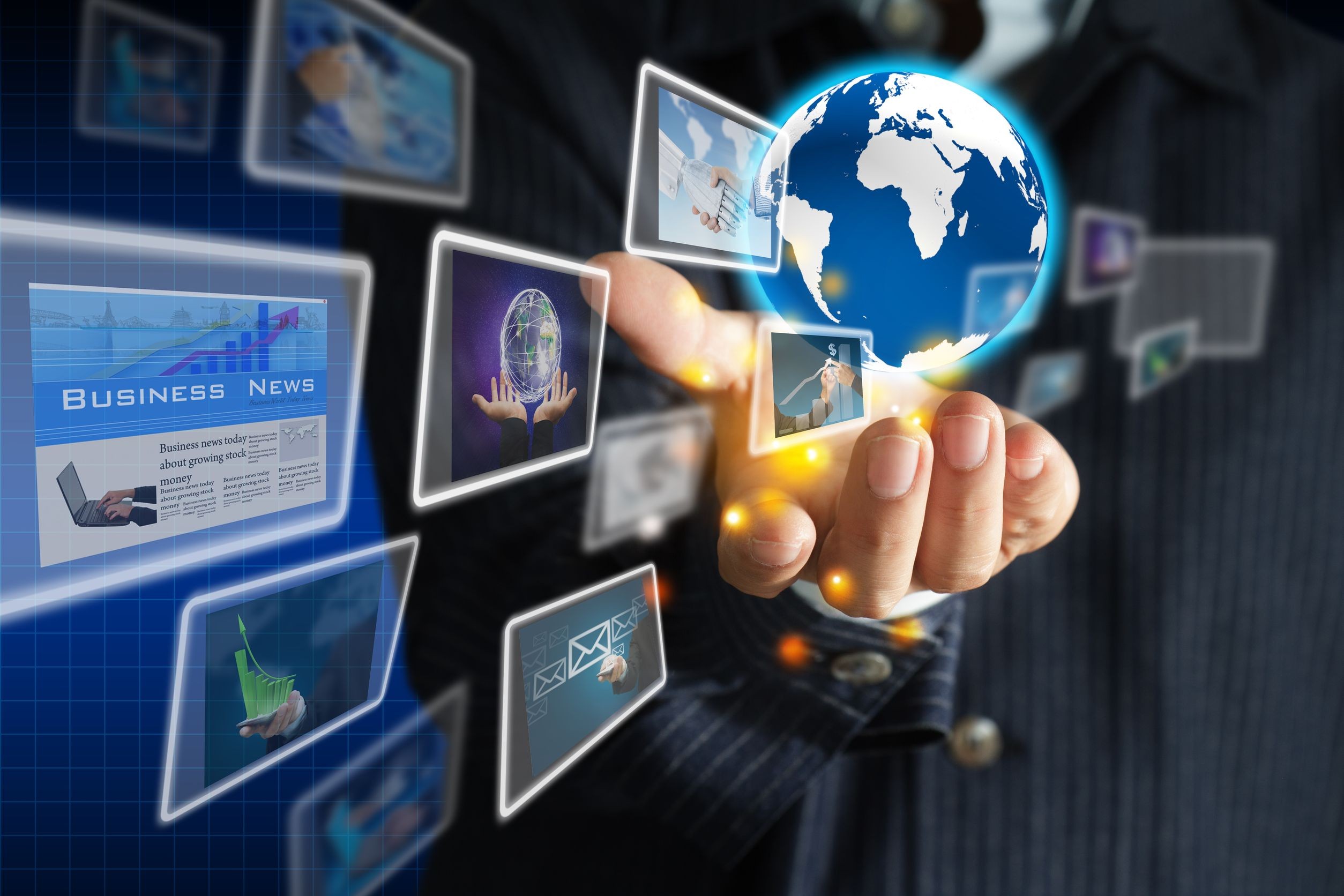Technology is a constant force in the modern world. It has a significant impact on the way organizations and businesses operate. Integration of technology in various processes has led to significant improvements in productivity, efficiency, and overall performance.
This transformation not only simplified operations but has also opened up new possibilities – from data analytics and automation to improved communication and collaboration. This extensive exploration will explore the many ways that technology has transformed and continues to improve business processes in various industries and sectors.
Table of Contents
1. Automation and Efficiency
Automation is one of the biggest effects technology has on processes. Automation is the use of technology for tasks that require minimal human interaction. It can be as simple as automating emails or as complex as robotics used to automate manufacturing.
a. Manufacturing and Industrial Automation
Automation has revolutionized manufacturing. Precision manufacturing has become faster and cheaper with the use of CNC machines and robotics. The result is a reduction in errors, an increase in throughput and a decrease in operational costs.
Inventory management is also automated. Inventory management systems can be used by businesses to reduce carrying costs, as well as the risk of stockouts, using sensors, RFID tags, and real-time information.
b. Office and Administrative Automation
Automation streamlines office administrative processes. Automated invoicing systems, for example, generate and send invoices, saving time and reducing manual error risks. HR departments automate recruitment processes such as resume screening and even pre-interviews.
Chatbots and virtual assistants have revolutionized the way companies interact with customers. These systems are able to provide 24/7 customer service, answer frequently asked questions, and perform basic troubleshooting.
2. Data Analytics for Informed Decision Making
Data proliferation in the digital age necessitated technologies that could harness this information to gain insights. Business intelligence and data analytics tools allow organizations to collect, analyze, and interpret information to make better decisions.
a. Predictive analytics
Predictive analytics is the use of historical data in order to predict future trends. This can be used in sales forecasting and risk assessment. It could even be used for preventive maintenance. Predictive analytics, for example, can help retailers predict product demand and reduce inventory costs, while ensuring that products are always available.
b. Machine Learning and AI
Artificial intelligence and machine learning technologies can sort through large datasets to identify patterns and anomalies that may be invisible to humans. AI can be used to minimize risk and detect fraud in certain industries, such as finance.
3. Collaboration and communication
Communication and collaboration are essential in the digital age. The technology has improved significantly both within and across organizations.
a. Internal Collaboration
Slack, Microsoft Teams, and other internal communication tools facilitate real-time communications, allowing team members to collaborate more easily on projects regardless of where they are located. Cloud-based solutions such as Google Workspace or Office 365 allow teams to collaborate on documents at the same time, increasing efficiency and reducing version control risks.
b. Remote Work Solutions
Remote work has also become more common due to technology. Thanks to high-speed internet, video conferencing software like Zoom or Microsoft Teams, and other tools that allow employees to collaborate from anywhere, they can do so effectively. It not only helps businesses achieve a better work-life balance, but it also allows them to tap into global talent pools.
4. Supply Chain Optimization
Supply chains are becoming increasingly complex in today’s global market. The technology has played an important role in optimizing the networks.
a.IoT and real-time tracking
Internet of Things (IoT), a new technology, allows for real-time monitoring and tracking. Sensors on goods in transit provide continuous updates about their location and state. This is a great way to improve logistics and ensure the quality of goods.
b. Demand Forecasting
Machine learning algorithms analyze historical data, market trends, and other factors to accurately forecast demand. Businesses can adjust production and supply management to meet the demand while reducing excess inventories.
5. Monitoring and Control of Processes
The technology has revolutionized the way that industries monitor and control processes. It is especially important in sectors like healthcare, energy, and chemical manufacturing.
a.Telemedicine and Healthcare
Telemedicine is a new phenomenon in healthcare. Remote consultations and routine checks are made easier for patients by being able to connect with their healthcare providers. Wearable health devices also allow for continuous monitoring of vital signs and early warnings about potential health problems.
b. Energy and Environmental Monitoring
The technology in the energy sector allows for remote monitoring of grids and power plants. Advanced sensors and control systems that are advanced help to manage energy distribution efficiently and reduce waste. Technology also helps monitor and control environmental factors such as emissions in real time.
6. Enhance Customer Experience
The technology has revolutionized the way businesses interact with customers.
E-Commerce & Personalization
Data analytics is used by online retailers to customize product recommendations and ads based on the browsing and purchasing history of a customer. This improves the customer’s experience and increases sales.
CRM and Customer Service
CRM systems enable businesses to analyze and manage customer data and interactions throughout the entire customer lifecycle. It is important to ensure that customers are provided with a consistent, personalized service.
7. Telemedicine and Healthcare
The impact of technology on healthcare is too great to be ignored. Technological advancements, from electronic health records to telemedicine, have improved diagnosis and patient care.
a. Electronic Health Records
EHR systems streamline patient information management and allow healthcare providers to instantly access patient records. This improves patient safety, ensures continuity of treatment, and reduces medical error risk.
b. Telemedicine
Telemedicine allows patients to consult healthcare professionals remotely. Telemedicine is particularly important for people who live in remote areas or are underserved. This reduces the requirement for travel and physical infrastructure.
8. Fintech and Financial Services
Fintech is often used to describe the technological transformation of the financial services industry. Online banking, digital wallets, and cryptocurrencies are changing the way financial transactions take place.
a. Digital Payments
Payments have become more convenient with the advent of digital wallets and mobile payment apps like Apple Pay and PayPal. These technologies have led to a decline in cash transactions by reducing fraud risk and making international transactions easier.
b. Cryptocurrency
Bitcoin and other cryptocurrencies have the potential to revolutionize banking systems. Blockchain technology, which is behind Bitcoin, provides secure and transparent records that can reduce fraud.
9. Education and eLearning
The technology has revolutionized education by making it accessible outside of traditional classrooms.
a. Online Learning Platforms
People can now access top-notch education through online learning platforms such as Coursera or edX. This has democratized the education system and created new opportunities for professional and personal growth.
b.Gamification and Interactive Learning
Gamification and interactive methods of learning have been introduced by technology to engage students and make the learning process more effective and enjoyable. Virtual laboratories and interactive simulations provide hands-on experiences, especially in STEM subjects.
10. Agriculture and Agtech
The technology revolutionized agriculture and led to more efficient farming methods.
a. Precision Agriculture
Precision agriculture uses technology such as GPS and remote sensing in order to maximize crop yields. Drones with sensors can monitor the health of crops and identify areas that require irrigation. This reduces water waste.
b. Software for Farm Management
Software for farm management tracks everything, from equipment maintenance to planting schedules. It ensures optimum resource use and increases efficiency in farm operations.
Challenges and considerations
Although technology presents many opportunities for improving processes, it also poses challenges and considerations that must be addressed.
1. Data Privacy and Security
Data collection and storage, particularly sensitive data, can raise concerns regarding privacy and security. Businesses need to invest in robust cybersecurity measures to protect their data from unauthorised access and cyberattacks.
2. Skill Gaps
The demand for professionals skilled in data science, cybersecurity, and artificial intelligence will continue to increase as technology advances. To bridge the skills gap, organizations must invest in training.
3. Cost of Implementation
It can be costly to adopt and integrate new technologies, as they require a significant investment at the beginning. These costs must be weighed against the benefits expected.
4. Change Management
Adapting to new processes is often required when implementing new technology. It is important to manage this change well if you want to achieve a successful adoption.
5. Ethics
Data analytics and AI raise ethical questions about bias and discrimination.
6. Compliance with Regulations
Many industries have regulations regarding the privacy of data and technology. Regulatory landscapes are complex, and organizations must stay competitive while navigating them.
Conclusion
It is indisputable that technology plays a major role in improving processes for all industries. Technology continues to improve efficiency, productivity, and innovation. These technological advancements come with challenges, including data security and ethical concerns. They require constant attention and vigilance.
The potential of future technological advancements to streamline and enhance processes and offer a world that is more efficient and sustainable is a promising prospect. The only constant in a world where organizations are harnessing the power of technology is change. And with that comes the promise of continual process improvement.




